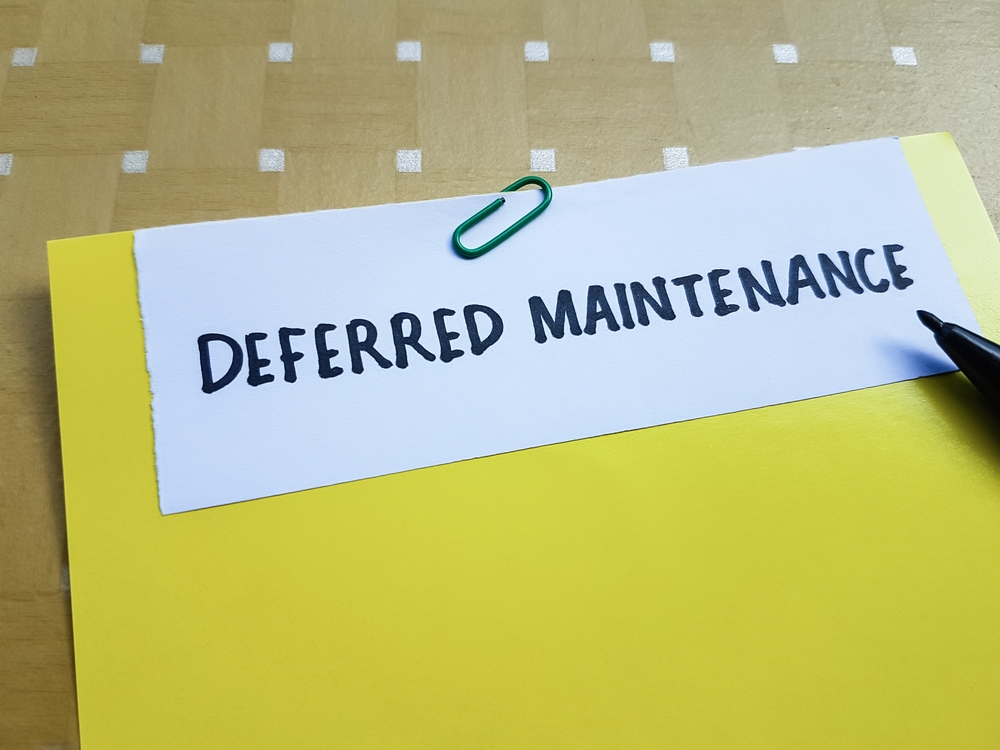How Deferred Maintenance Can Kill a Commercial Deal

When it comes to securing or closing a commercial deal, many factors come into play: market conditions, location, potential for growth, and financial stability. However, one often overlooked aspect that can make or break the success of a deal is deferred maintenance. This term refers to the practice of postponing repairs and necessary upkeep on a property, and while it may seem like a minor issue, it can have significant consequences for any commercial transaction. In particular, in regions like Western Montana, where commercial properties may be older or in remote areas, the impact of deferred maintenance can be even more pronounced. Whether you’re a seller, buyer, or investor, understanding how deferred maintenance can derail a deal is crucial to navigating the complexities of commercial real estate.
What is Deferred Maintenance?
Deferred maintenance refers to the intentional or unintentional delay of routine upkeep or repairs to a property. It could be as simple as neglecting to fix a leaky roof or as complex as postponing major structural repairs to a building. In the world of commercial real estate, this issue is particularly problematic because the consequences of deferred maintenance can accumulate over time, leading to larger, costlier problems in the future.
For property owners, the temptation to put off maintenance is often tied to financial concerns or the hope that minor issues will resolve themselves. However, while skipping a few maintenance tasks might seem like a smart financial move in the short term, it can significantly reduce a property’s value in the long run. In commercial deals, this is especially concerning, as investors or potential buyers are typically looking for properties that will be stable, functional, and capable of generating returns without requiring major repairs soon after the purchase.
Commercial properties in Western Montana, especially in rural areas, can be particularly susceptible to deferred maintenance due to their age and the challenging climate. Older buildings might have outdated plumbing, electrical systems, or roofing materials that were once standard but no longer meet current codes or standards. With more remote locations, it can sometimes be difficult to find contractors who are willing to travel or take on a job that might involve extensive repairs. As a result, deferred maintenance can pile up without anyone noticing, potentially jeopardizing a commercial deal.
How Deferred Maintenance Affects Property Value
The most immediate consequence of deferred maintenance is its negative impact on the value of the property. When a building is not properly maintained, it inevitably suffers from wear and tear that diminishes its market appeal. Structural issues, failing systems, or an outdated aesthetic can deter potential buyers or tenants from seeing the value in the property. The perception of a poorly maintained building can lead to reduced offers, lower lease rates, or extended time on the market for the property owner.
In many cases, the financial burden of addressing deferred maintenance becomes evident during the due diligence process. Buyers and investors typically hire inspectors to assess the condition of the property, and any sign of deferred maintenance will be documented. If major issues are found—whether it’s a crumbling foundation, outdated HVAC systems, or significant water damage—buyers are likely to either lower their offers or walk away entirely. In some cases, they may demand that the seller make the necessary repairs before the deal can proceed. This is particularly true for commercial properties in areas like Western Montana, where severe weather conditions and remote locations can exacerbate maintenance issues. A roof that has been neglected for years might be at risk of collapsing under the weight of a heavy snowstorm, for example, which would be a major deal-breaker for anyone looking to purchase or lease the property.
Risk of Increased Operating Costs
Another significant factor in how deferred maintenance can kill a commercial deal is the impact on future operating costs. When repairs are delayed, the building’s infrastructure tends to deteriorate more quickly, which leads to higher maintenance costs down the line. For commercial tenants or buyers, this translates to higher expenses and operational risks. For example, a faulty HVAC system that hasn’t been serviced in years may eventually break down entirely, resulting in costly repairs or replacements. A deteriorating roof can lead to leaks that damage interior fixtures and equipment, driving up the cost of repairs and potentially disrupting business operations.
In Western Montana, where harsh winters and unpredictable weather conditions can put extra strain on commercial properties, the potential for increased operating costs is even more pronounced. Property owners who fail to address deferred maintenance could find themselves facing even higher costs when the systems finally break down under extreme weather pressures. If the buyer or tenant anticipates these future expenses, they may see the property as a poor investment and back out of the deal, further complicating the commercial transaction.
For investors, understanding the potential for these increased costs is essential when evaluating a commercial property. If deferred maintenance is present, the investor might be forced to allocate more capital toward fixing the property than they initially anticipated, which could impact the overall return on investment (ROI). Furthermore, the risk of ongoing maintenance expenses can make the property less attractive to tenants, leading to vacancy or reduced rental rates.
Impact on Financing and Insurance
Deferred maintenance can also have a serious effect on financing and insurance, both of which are crucial elements in any commercial deal. Lenders are often hesitant to finance properties that show signs of neglect because the condition of the property directly affects its collateral value. If significant deferred maintenance is detected, a lender might require that repairs be completed before approving a loan. In some cases, the lender may even refuse to finance the deal entirely, particularly if the maintenance issues are deemed to be a safety concern or if the property is at risk of becoming uninhabitable.
Insurance companies also view properties with deferred maintenance as higher risks. A building that is not properly maintained is more likely to experience damage from natural disasters, accidents, or general wear and tear. As a result, property owners may face higher premiums or even difficulty obtaining coverage. In the case of commercial deals, this can be a significant deterrent, as both buyers and lenders need to ensure that adequate insurance is in place before proceeding with the transaction. Without sufficient coverage, the deal might be halted altogether, or it may require additional negotiations to secure a solution that satisfies all parties.
In the context of Western Montana, where properties might be located in rural or mountainous areas, the challenges associated with securing financing and insurance can be even more complicated. Lenders and insurers may already be wary of properties in remote regions, and if the property shows signs of deferred maintenance, they may view it as an even greater risk, which could lead to a deal falling through.
Preventing Deferred Maintenance from Derailing a Commercial Deal
To avoid the negative consequences of deferred maintenance, it is essential for both buyers and sellers to address these issues before the deal progresses too far. For sellers, staying on top of maintenance and repairs is the best way to ensure that the property maintains its value and appeal. Regular inspections, preventive measures, and prompt attention to repairs can help avoid the accumulation of deferred maintenance.
For buyers and investors, conducting a thorough due diligence process is critical. This includes hiring professionals to inspect the property for any signs of neglect or potential future issues. Understanding the full scope of the maintenance required—and the associated costs—can help buyers make informed decisions and avoid being blindsided by unexpected expenses.
In regions like Western Montana, where maintenance challenges can be more pronounced due to climate and location, working with local contractors and experts familiar with the specific challenges of the area can also make a significant difference in preventing deferred maintenance from becoming a deal-breaker.
Conclusion
Deferred maintenance can be a silent killer of commercial deals. Whether it leads to reduced property values, increased operating costs, or complications with financing and insurance, the impact of deferred maintenance cannot be underestimated. By addressing maintenance issues early on, property owners can protect the value of their investments and ensure that their commercial deals proceed smoothly, regardless of location. In regions like Western Montana, where properties may be older and subject to harsher conditions, taking a proactive approach to maintenance is even more critical for the success of any commercial transaction.
